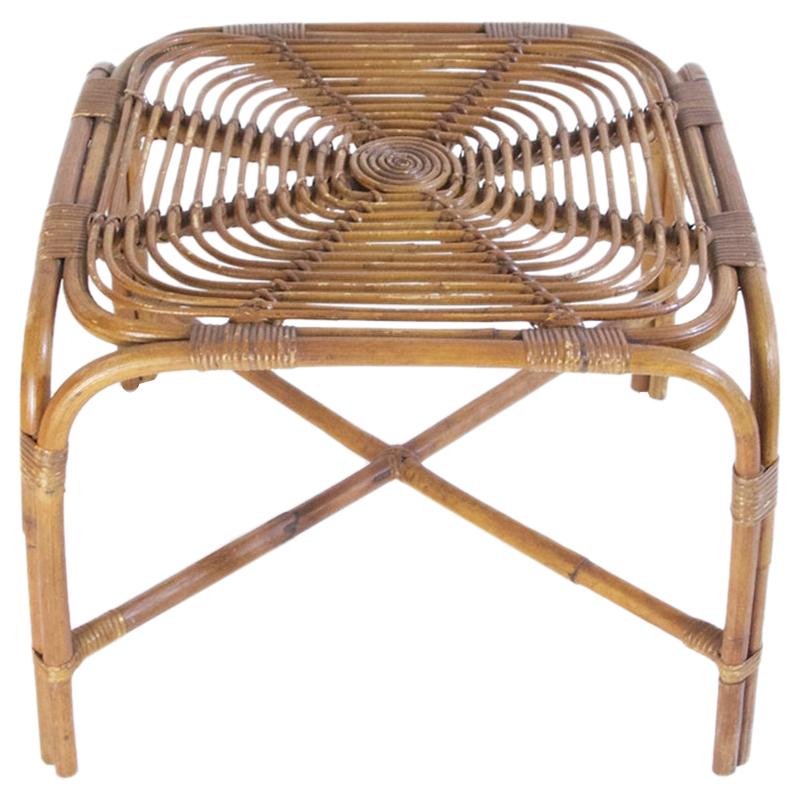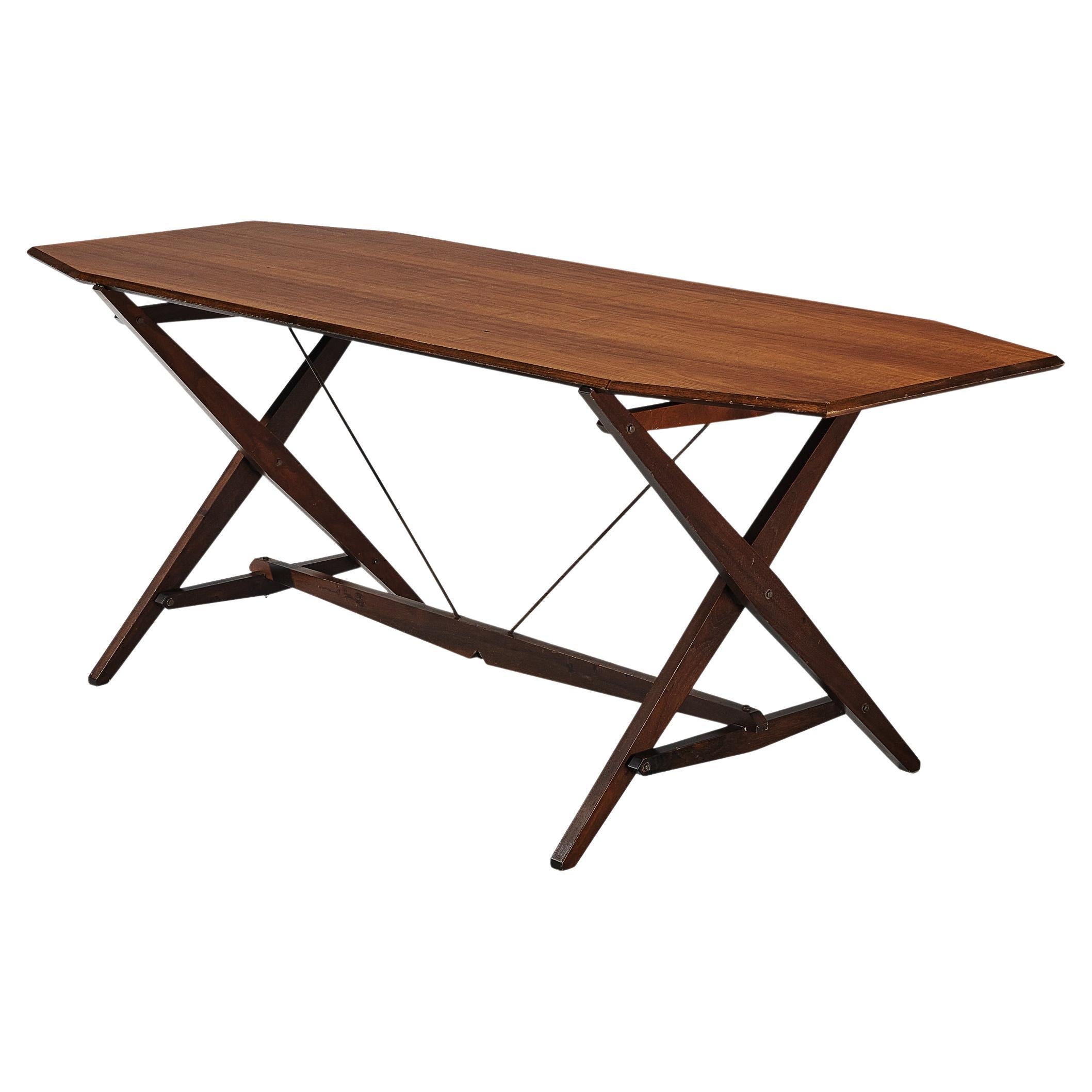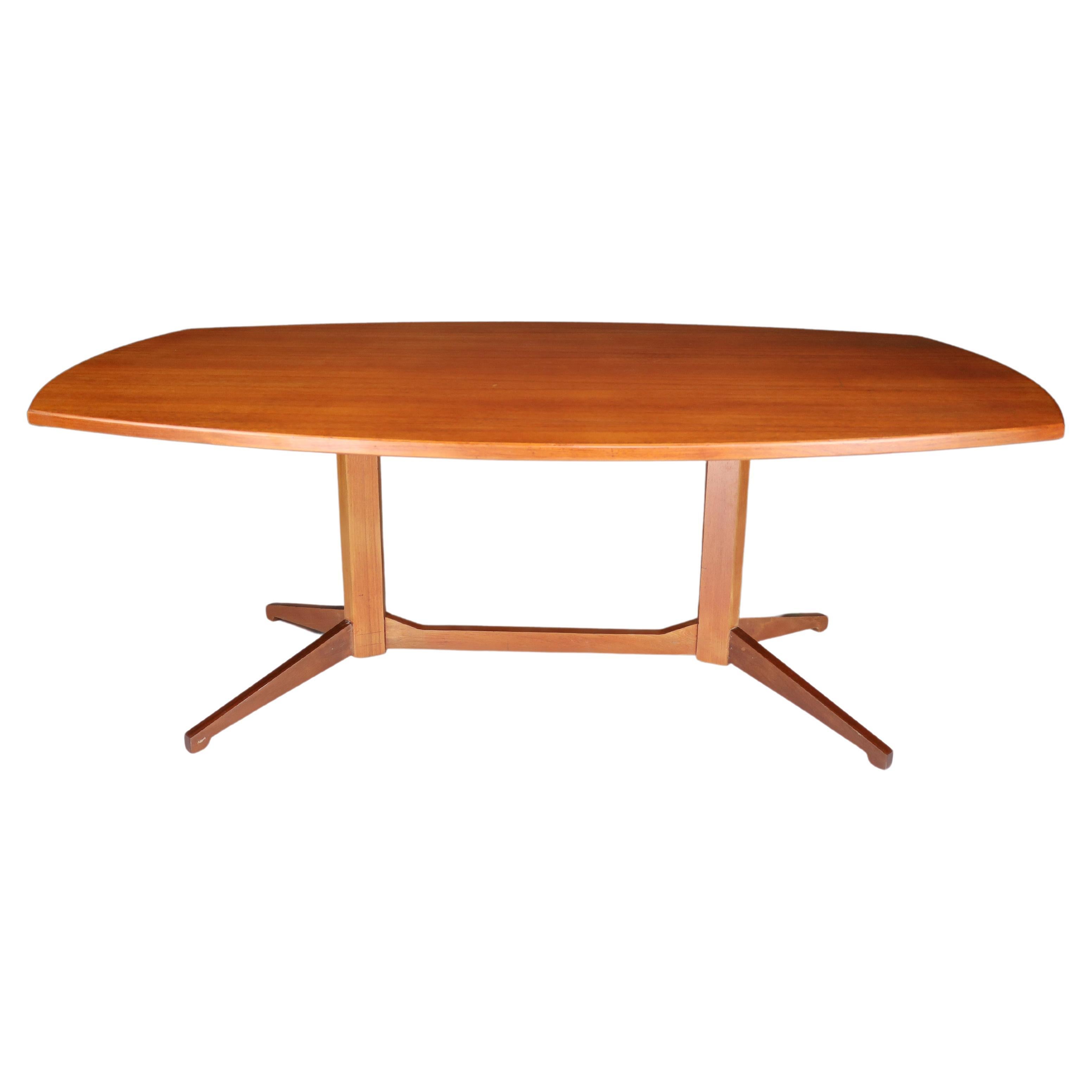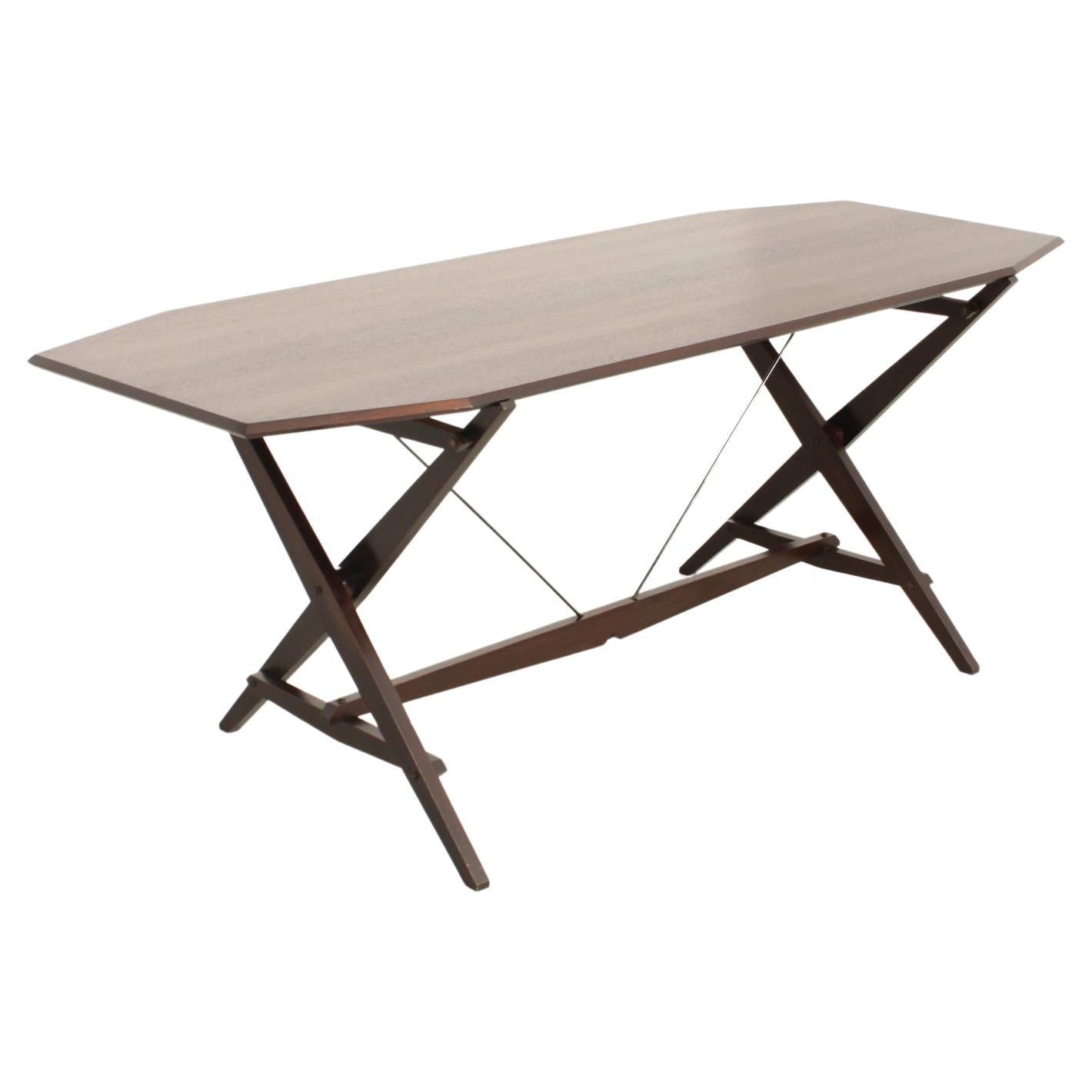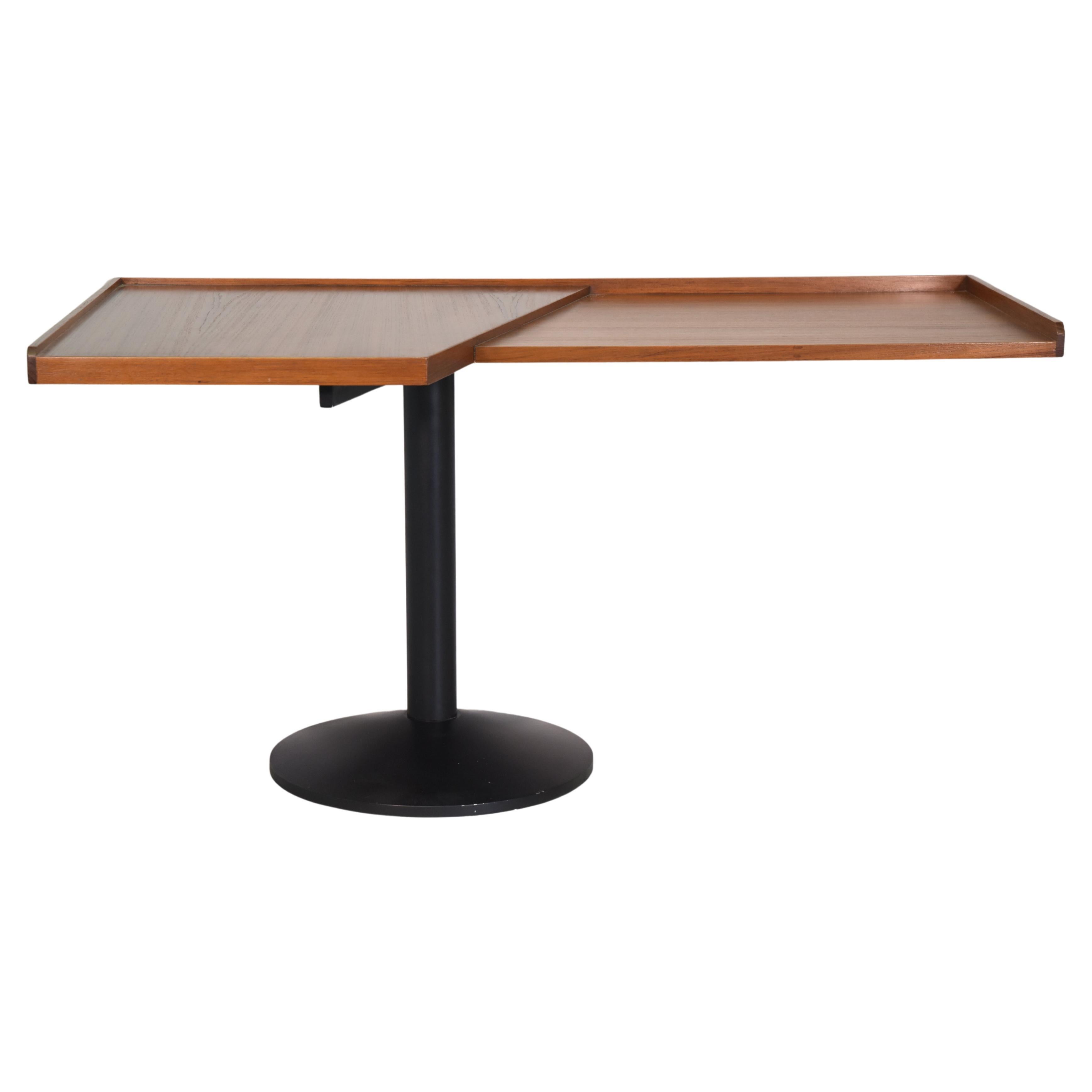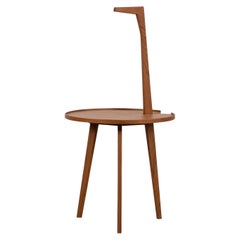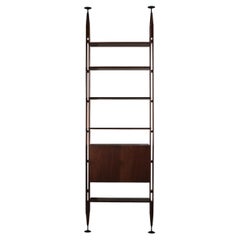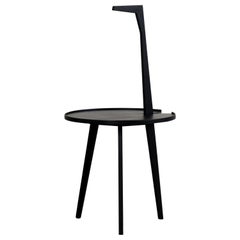
Franco Albini Cicognino Black Coffee Table for Poggi Pavia, 1953
View Similar Items
Franco Albini Cicognino Black Coffee Table for Poggi Pavia, 1953
About the Item
- Creator:Franco Albini (Designer),Poggi (Manufacturer)
- Dimensions:Height: 31.5 in (80 cm)Diameter: 15.75 in (40 cm)
- Style:Mid-Century Modern (Of the Period)
- Materials and Techniques:Wood,Lacquered
- Place of Origin:
- Period:
- Date of Manufacture:1953
- Condition:
- Seller Location:Montecatini Terme, IT
- Reference Number:1stDibs: LU5304222472992
Franco Albini
While working under the polymath Gio Ponti — arguably the most important figure in 20th-century Italian modernism — furniture designer Franco Albini nurtured a love for modern forms combined with traditional craft techniques.
Albini is widely known for working with organic materials such as rattan and cane for his chairs and other seating, but he also played a pivotal role in the Italian rationalist movement of the early 20th century, which saw architects and furniture makers applying a strict emphasis on geometry in their work. Rationalists drew on Ancient Roman architecture but rejected ornament, much in the way that Le Corbusier and celebrated Bauhaus figures such as Ludwig Mies van der Rohe had in their modernist furniture.
Albini received his degree in architecture from the Polytechnic University of Milan in 1929, and, in 1931, he founded his practice in Milan, where he tackled workers’ housing and other reconstruction projects. A gifted urban planner, he also developed the Palazzo Bianco, Palazzo Rosso and Tesoro di San Lorenzo museums in Genoa. While Albini is revered for his Margherita chair — a Triennale Milano award winner created for Bonacina in 1951 — he also collaborated with manufacturers Poggi and Cassina in the 1940s on seating, tables and more that embodied his artistic vision. Of that mid-century work, the one piece that perhaps best captures this vision is the iconic Luisa chair.
With its cherry red upholstery and sinuous wooden legs that seem to float aboveground, the Luisa is a genuine masterpiece. It is also a testament to Albini’s perfectionism, as it endured several prototypes — including one made by Knoll in the late 1940s — and took approximately 15 years to design. Poggi launched the final version of the armchair in 1955, earning Albini the prestigious Compasso d’Oro from Italy’s Association for Industrial Design. It is produced today by Cassina. Albini named the chair for someone who likely saw the process firsthand: his personal secretary of two decades, Luisa Colombini.
Find vintage Franco Albini furniture on 1stDibs.
- Franco Albini Cicognino Coffee Table in Teak Wood by Poggi Pavia 1970s ItalyBy Poggi, Franco AlbiniLocated in Montecatini Terme, ITCicognino coffee table entirely made in teak wood designed by Franco Albini in 1952 and firstly produced by the Italian company, Poggi Pavia from the 1950s. The Cicognino coffee t...Category
Vintage 1970s Italian Mid-Century Modern Coffee and Cocktail Tables
MaterialsTeak
- Franco Albini TL30 Round Table in Metal and Wood for Poggi Pavia 1950s ItalyBy Poggi, Franco AlbiniLocated in Montecatini Terme, ITRound table model TL30 with black lacquered metal base and a wooden top. Designed by Franco Albini for Poggi, Pavia in 1950s. After spending his childhood and part of his youth in Robbiate in Brianza, where he was born in 1905, Franco Albini moved with his family to Milan. Here he enrolled in the Faculty of Architecture of the Polytechnic and graduated in 1929. He starts his professional activity in the studio of Gio Ponti and Emilio Lancia, with whom he collaborates for three years. He probably had his first international contacts here In those three years, the works carried out are admittedly of a twentieth-century imprint. It was the meeting with Edoardo Persico that marked a clear turning point towards rationalism and the rapprochement with the group of editors of “Casabella”. The new phase that that meeting provoked starts with the opening of the first professional studio in via Panizza with Renato Camus and Giancarlo Palanti. The group of architects began to deal with public housing by participating in the competition for the Baracca neighborhood in San Siro in 1932 and then creating the Ifacp neighborhoods: Fabio Filzi (1936/38), Gabriele D’Annunzio and Ettore Ponti (1939). Also in those years Albini worked on his first villa Pestarini. But it is above all in the context of the exhibitions that the Milanese master experiments his compromise between that “rigor and poetic fantasy” coining the elements that will be a recurring theme in all the declinations of his work – architecture, interiors, design pieces . The opening in 1933 of the new headquarters of the Triennale in Milan, in the Palazzo dell’Arte, becomes an important opportunity to express the strong innovative character of rationalist thought, a gym in which to freely experiment with new materials and new solutions, but above all a “method”. Together with Giancarlo Palanti, Albini on the occasion of the V Triennale di Milano sets up the steel structure house, for which he also designs the ‘furniture. At the subsequent Triennale of 1936, marked by the untimely death of Persico, together with a group of young designers gathered by Pagano in the previous edition of 1933, Franco Albini takes care of the preparation of the exhibition of the house, in which the furniture of three types of accommodation. The staging of Stanza per un uomo, at that same Triennale, allows us to understand the acute and ironic approach that is part of Albini, as a man and as a designer: the theme addressed is that of the existenzminimum and the reference of the project is to the fascist myth of the athletic and sporty man, but it is also a way to reflect on low-cost housing, the reduction of surfaces to a minimum and respect for the way of living. In that same year Albini and Romano designed the Ancient Italian Goldsmith’s Exhibition: vertical uprights, simple linear rods, design the space. A theme, that of the “flagpole”, which seems to be the center of the evolution of his production and creative process. The concept is reworked over time, with the technique of decomposition and recomposition typical of Albinian planning: in the setting up of the Scipio Exhibition and of contemporary drawings (1941) the tapered flagpoles, on which the paintings and display cases are hung, are supported by a grid of steel cables; in the Vanzetti stand (1942) they take on the V shape; in the Olivetti store in Paris (1956) the uprights in polished mahogany support the shelves for displaying typewriters and calculators. The reflection on this theme arises from the desire to interpret the architectural space, to read it through the use of a grid, to introduce the third dimension, the vertical one, while maintaining a sense of lightness and transparency. The flagpole is found, however, also in areas other than the exhibition ones. In the apartments he designed, it is used as a pivot on which the paintings can be suspended and rotated to allow different points of view, but at the same time as an element capable of dividing spaces. The Veliero bookcase...Category
Vintage 1950s Italian Mid-Century Modern Dining Room Tables
MaterialsMetal
$2,440 Sale Price20% Off - Franco Albini LB7 Bookcase in Teak Wood by Poggi Pavia 1950s ItalyBy Poggi, Franco AlbiniLocated in Montecatini Terme, ITLB7 bookcase composed of a single module with shelves and a storage unit with two doors, made in veneered solid teak wood, and black lacquered metal details. Designed by Franco Alb...Category
Vintage 1950s Italian Mid-Century Modern Bookcases
MaterialsMetal
- Franco Albini PL19 or Tre Pezzi Armchair in White Wool by Poggi Pavia, 1950sBy Franco Albini and Franca Helg, PoggiLocated in Montecatini Terme, ITPL19 also known as Tre Pezzi armchair with black enameled steel tube structure, upholstered in white Mongolian goat wool. Designed by Franco Albini & Franca Helg for Poggi, Pavia...Category
Vintage 1950s Italian Post-Modern Armchairs
MaterialsSteel
- Ettore Sottsass Rectangular Wooden Coffee Table by Poltronova 1960s ItalyBy Poltronova, Ettore SottsassLocated in Montecatini Terme, ITA rectangular low coffee table entirely made in wood, designed by Ettore Sottsass for Poltronova, Agliana 1960s. The son of an architect, Ettore Sottsass Jr. (1917-2007) was born i...Category
Vintage 1960s Italian Mid-Century Modern Coffee and Cocktail Tables
MaterialsWood
- Gio Ponti Coffee Table in Wood and Glass by Figli di Amedeo Cassina 1950sBy Gio Ponti, Figli di Amadeo CassinaLocated in Montecatini Terme, ITCoffee or occasional table with structure in wood a removable center part in sheet metal and a rectangular shaped table top designed by Gio Ponti and produced by Figli di Amedeo Cassina...Category
Vintage 1950s Italian Mid-Century Modern Coffee and Cocktail Tables
MaterialsMetal
- 20th Century Franco Albini Pair of TN6 Cicognino Coffee Tables in Wood, 50sBy Poggi, Franco AlbiniLocated in Turin, TurinAn iconic design with a refined and essential taste, which in its playful form evokes a reassuring feeling of familiarity. Franco Albini created the table by reducing its structure t...Category
Vintage 1950s Italian Mid-Century Modern Coffee and Cocktail Tables
MaterialsWood
- Midcentury Bamboo Table in the Style of Franco Albini, ItalyBy Franco AlbiniLocated in Albano Laziale, Rome/LazioA square bamboo coffee table in the style of Franco Albini, Italy. The chairs are in very good condition and functions well.Category
Mid-20th Century Italian Mid-Century Modern Coffee and Cocktail Tables
MaterialsBamboo
- Franco Albini for Poggi Dining Table in WalnutBy Franco Albini, PoggiLocated in Waalwijk, NLFranco Albini for Poggi, dining table, model TL2, walnut and iron, Italy, 1951. The TL2 table by Franco Albini features a simplistic and sleek design. Executed in darkened walnut wo...Category
Vintage 1950s Italian Mid-Century Modern Dining Room Tables
MaterialsIron
- Franco Albini for Poggi Table or Desk, Italy, 1960sBy Franco Albini, PoggiLocated in Almelo, NLFranco Albini for Poggi table or desk, Italy, 1960s Walnut table TL22 model by Franco Albini for Poggi Italy 1960s. It is in excellent condition, with a minor patina on the wood parts. This unique table or desk would be an eye-catching addition to any interior, such as a living room, family room, screening room, or office. It also perfectly fits in a hospitality or corporate location like a boutique hotel lobby or luxury loft. When you choose for used mid...Category
Mid-20th Century Italian Mid-Century Modern Dining Room Tables
MaterialsWood, Walnut
- Franco Albini for Poggi Model 840 Stadera DeskBy Franco Albini, PoggiLocated in Milano, ITRare and important desk model Stadera designed by Franco Albini for the Poggi manufacture, in 1959. Model 840. Made of noble wood for its shelf, the desk is the perfect modernist ele...Category
Vintage 1950s Italian Mid-Century Modern Desks and Writing Tables
MaterialsMetal
- Cavalletto Dining or Working Table by Franco Albini for PoggiBy Poggi, Franco AlbiniLocated in Barcelona, ESCavalletto or TL2 dining or working table designed in 1950 by italian architect Franco Albini, old Poggi edition. Wood construction with beveled edges tabletop and crossed legs with ...Category
Vintage 1950s Italian Mid-Century Modern Dining Room Tables
MaterialsMetal


